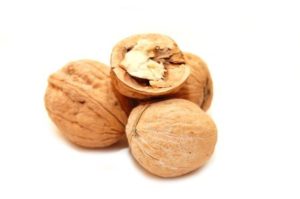
MindCheck is the Weekly Wednesday Kids Mental Health series with Dr. Ray Pataracchia N.D. MindCheck provides in depth information on the orthomolecular approach to coping with mood and/or behavior disorders. The MindCheck Health Series is endorsed by the Mindful Network – ‘A Better Future for Children’s Mental Health’.
You are what you eat and in today’s fast-food society, we often wonder how nutrient-rich our diets are.
Nutrient-Rich Food in Mental Health
What foods give us in nutrient value may be more than we think.
Food-Based Nutrients
The human body can take nutrients from food sources (i.e. plants and animals) and absorb them readily in their intended natural form, a form that is ideal in terms of absorption.
What about nutrients derived from supplements that we take?
In addition to eating well many people need to add supplemental nutrients to improve their physical and mental state. The dose of nutrients that provides an improvement in symptoms is the right dose.
Many people recognize that today’s food supply is nutrient deficient
Food processing techniques make use of preservatives, dyes, and fillers to achieve a product that is convenient to prepare, low cost, and stores well. Agricultural techniques such as the mono-cropping of wheat (wheat gluten is used as a filler) have diminished the quality of the food we eat today. Much of the supermarket food that we eat today is completely different from what we as humans have consumed over the centuries.
Protein deficient diets
About 70% of clients that I see report that they just don’t eat much at breakfast and if they do it’s mostly carbohydrates, versus proteins. They attempt to make up for this lack of protein by including higher quality proteins (e.g. meat) at dinner time which is good but the lack of protein earlier in the day creates a deficiency state. I have a plethora of blog articles on protein intake and one recent blog on how to cook high protein meals that are worthy of a read.
Common Mental Health Nutrient Deficiencies and Nutrient-Rich Food Sources
The 15 most common mental health syndromes are pivotal syndromes in terms of improving the lives of those suffering. Herein I’ll concentrate on the more important deficiencies: iron, zinc, copper, and magnesium.
Iron deficiency: food-based sources
Good iron sources include: meat and fish, whole grain products, legumes, nuts, vegetables, brewer’s yeast, and soy.
If we look at one of the highest commonly consumed iron source here, for example beef, we can compare the iron concentration in beef to the typical therapeutic range of iron used in clinical naturopathic practice. Beef has 3.7mg of iron per 100g (3+oz) serving and the naturopathic dose range is 10-100mg of elemental iron per day depending on the severity of the case. So if you eat high iron foods and your iron level still does not improve then some type of supplemental iron may be indicated.
Zinc deficiency: food-based sources
Good zinc sources include: meat, eggs, milk, cheese, fish, potatoes, and whole grains.
If we look at one of the highest commonly consumed zinc source here, for example beef again, we can compare the zinc concentration in beef to the typical therapeutic range of zinc used in clinical naturopathic practice. Beef has 12.3mg of zinc per 100g serving and the naturopathic dose range is 5-60mg of elemental zinc per day depending on the severity of the case, and higher doses are required if zinc is used to liberate metals as in a metal removal protocol. So if you eat high zinc foods and your zinc level still does not improve then some type of supplemental zinc may be indicated.
Copper deficiency: food-based sources
Good copper sources include: meat and fish, vegetables, legumes, whole grain products and nuts. [Note that high iron foods are also high in copper.]
If we look at one of the highest commonly consumed copper source here, for example nuts, we can compare the copper concentration in nuts to the typical therapeutic range of copper used in clinical naturopathic practice. Cashew nuts have 2.2mg of copper per 100g (~ ¾ cup) serving and the typical naturopathic dose range is at least 0.5-6mg of elemental copper per day depending on the severity of the case and higher doses if required. So if you eat high copper foods and your copper level still does not improve then some type of supplemental copper may be indicated.
Magnesium deficiency: food-based sources
Good magnesium sources include: whole grain products (especially wheat germ), vegetables (especially leafy greens), mushrooms, brewer’s yeast, bananas, and raisins.
Did you know? Magnesium is high in green leafy vegetables because the pigment chlorophyll that makes leaves green has magnesium as the central mineral ion.
If we look at one of the highest commonly consumed magnesium source here, for example spinach, we can compare the magnesium concentration in spinach to the typical therapeutic range of magnesium used in clinical naturopathic practice. Spinach has 87 mg of magnesium per 100g (½+ cup) serving and the typical naturopathic dose range is at least 100-1000mg of elemental magnesium per day depending on the severity of the case. So if you eat high magnesium foods and your magnesium level still does not improve then some type of supplemental magnesium may be indicated.

